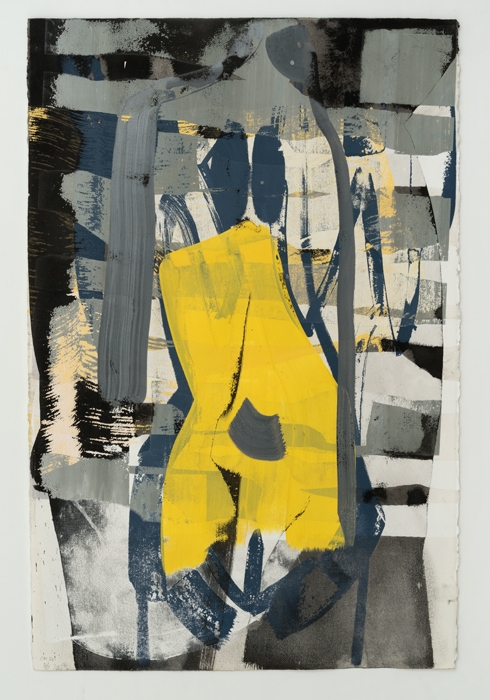‘How does a painting belong to a network?’ David Joselit asked in ‘Painting Beside Itself’, nearly a decade ago. Also in 2009, Amy Sillman started pairing her paintings with zines – made freely available to visitors – that fleshed out her works’ associative threads. In her case, the word network could be substituted for any number of less clinical terms – like cult, coven or an intergenerational fabric of queer(ed) affinities. And although Sillman advocates for a formal, poetic reading of her work that bridges abstraction and figuration, it’s impossible for me to read it outside of either language or our overlapping networks, which include her former students at Bard College (where I studied curating).
The artist once described herself as a ‘Romantic Modern Postmodern Aesthetic Sensualist’, and both her art and pedagogy encourage an unabashed pleasure in making and looking. Yet on some level, she is also a contrarian. Mostly Drawing, Sillman’s debut show with Gladstone, includes 30 compositions – with one exception, all around 102 Å~ 66 cm – crammed end-to-end on the gallery’s walls. Housed in the gallery’s Upper East Side location, the installation thumbs its nose at the conventions of both white-cube display and tasteful decor.
The works themselves, made from a process of silkscreening and painting on paper, seduce the viewer into a meditation on the relationship between painting and language, reproduction and spontaneous gesture. A trio of drawings displayed near a window (SK40, SK21 and SK47, all 2017) vibrate with the contrast between ghostly white overpainting and hot hues of yellow and orange. Here a body is suggested, perhaps of a back hunched over. Several other compositions nod to the AbEx generation of which Sillman is an unabashed fan; two women gallerygoers debated her relationship to Motherwell in front of the drawing Anti-Social #2 (2018). I found myself more drawn, however, to works like SK9 (2017). Here the upper half is partly obliterated by a black swoosh likely left by the side of a squeegee, while the bottom half depicts legs in motion. A raised foot (one of Sillman’s signature motifs) appeared again nearby, in XL–18–1 (2018), a 150 x 100 cm composition hung above a fireplace. Here, the ugly appendage seemed poised to stomp out the fire.
Sillman’s accompanying black-and-white zine plays on the notion of the publication as a Rosetta Stone. The front cover shows a simple line drawing of a jug filled with pictograms, complemented by contributions like those of Alexander May and Jess Arndt (both Bard grads), who added vaguely onomatopoeic captions to Ray Yoshida drawings, or a diagram of tools by Erika Vogt (a Bard faculty member). But ultimately, Sillman’s interest in language is the way that it unlocks or suppresses desires. On one page of the zine, she reproduces Carol Rama’s drawing Cadeau (2000): a surreal, headless series of spread legs, with black censor bars covering the genitalia. A few pages later, opposite a work by her former assistant Rebecca Watson Horn resembling a big bang, Sillman includes her own writing on her drawings: ‘A gesture made from between the legs and discharged through the gullet […] The drawings that result lie on the floor like abandoned arrows from a quiver, dejected and excited.’ Rather than a network, we might rethink Sillman’s work as a series of knots: entanglements between organs, artists and histories.
Amy Sillman: Mostly Drawing, Gladstone 64, New York, 26 January – 3 March 2018
From the April 2018 issue of ArtReview
